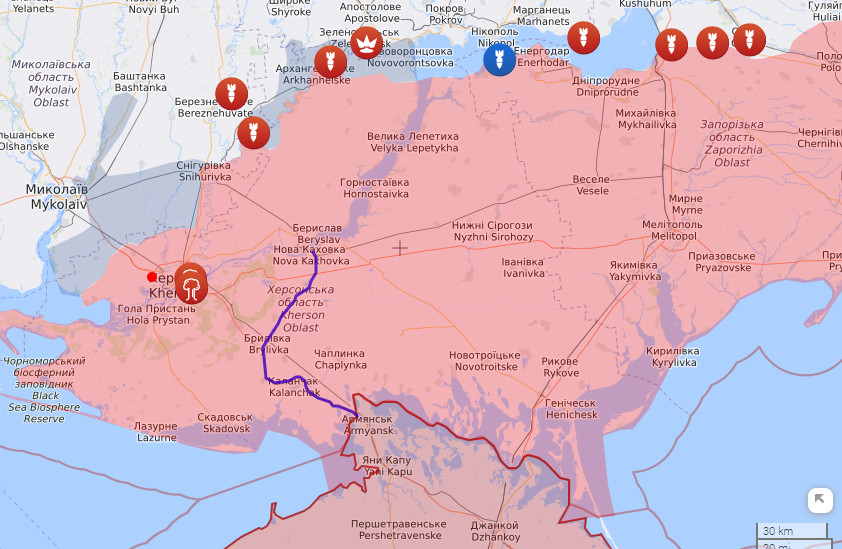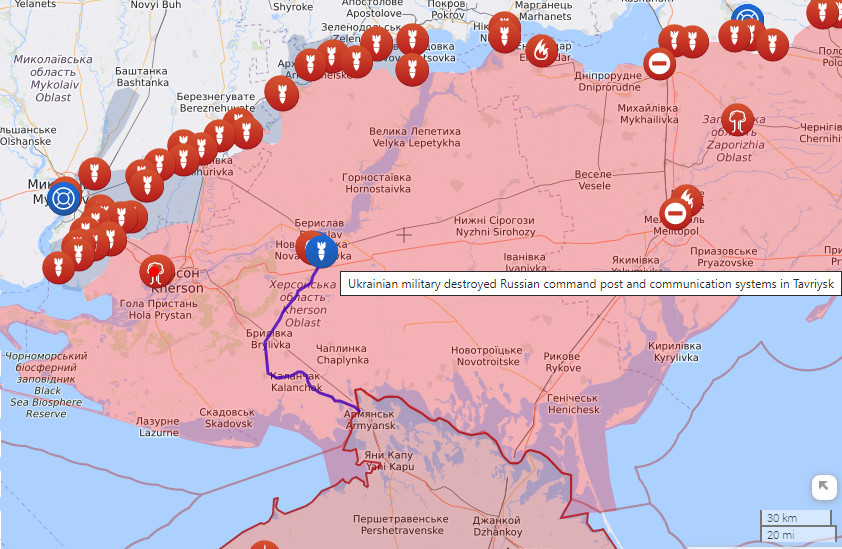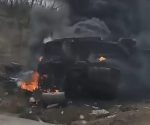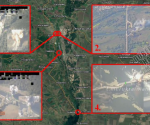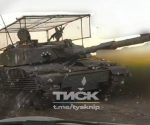Real Russian progress versus phantasmal Ukrainian counter attacks – and the part played in the latter by “wunderwaffe”
This last week The Guardian had one of its “journalists” take a look at the prospects of a Ukrainian Armed Forces counterattack to recapture the city of Kherson, but Dan Sabbagh – he who was assigned the task (or took it upon himself to do it) – didn’t find anything resoundingly positive to say. In fact, with the article filled with words and phrases such as, “challenge”, “constraint on… ability”, “difficult”, “not yet obvious”, “no evidence”, it’s not surprising to find the analysis being concluded by referencing a certain Sergiy Khlan (an aide in an Ukrainian office that, in spite of reality, insists on calling itself the administration of the Kherson region) who “suggested the best option for the Russians was to voluntarily surrender” the city.
While on the most fundamental of all levels – i.e. where the truth resides – this is an admission of an hopeless situation, it is at the same time and on another level a reference to a plan that is openly touted on social media (thus exposing its essentially being more propaganda to give the impression that there is Ukrainian war readiness where none in actual fact exists) to persuade the Russians not to occupy the city.
The plan is this: the “wunderwaffe” HIMARS pieces newly acquired from the USA – of which there could be 12, although this has been made disputable by Russian missiles – will be exploited for their having longer ranges and better precision than other Ukrainian stock so as to hit four bridges that cross the Dnieper River and tributaries that divide the Kherson oblast so that the city, on the northern side, becomes isolated and vulnerable, juxtaposed as it is to the Ukrainian-held Mykolaiv. The idea, apparently, is to make the Russians believe their occupation is unsustainable and have them choose to evacuate. Moreover, further pressure is to be applied by the staging of a military offensive. This is the plan.
In the detail, or so we are supposed to understand, the means to compromising the Russians is by making reinforcement of heavy weaponry, but not necessarily resupply impossible: as Sabbagh quotes Khlan speaking about the Dariv Bridge in this particular instance (after an incidence of an Ukrainian attack), the Ukrainians would “do everything possible not to destroy the structure”. “The Ukrainian military” then reaffirms Sabbagh, “wants to ensure that food supplies can still cross into the city”.
Clearly, if goods can be transported across the bridges for civilians, they can be transported for soldiers, and this obvious weakness of supposed Ukrainian ambition points to Khlan not being honest in a concern for the well-being of Kherson citizenry, and a real plan that is unlikely to succeed (seeing as the bridges probably need to have explosives strapped to structural members to dismantle them) but, thanks to the cover story, where failure can be labelled as success.
The day after the Ukrainians attacked the Antonivsky bridge on 26th July, as reported by (the biased) liveuamap.com, “Russian forces… set up a ferry next to the destroyed E97 [Antonivsky] bridge in Kherson”. In fact the bridge was not destroyed, but that there could be no crossing of it, what with the road surface punched through with a number of holes (as one might expect to be the result of bombs from above), betrays what the Ukrainians actually want to do. That being said, it is notable that the Russians overcame any difficulties with a simple fix, and this points to the possibility of them having no greater expectation than light resupply for how they want to use the bridge. And this makes all the difference.
The Ukrainians will probably also well know that once the Russians already have all the heavy equipment they want on the northern side of the water, they won’t need more – all for the simple reason that the Ukrainians do not have the capacity to make the Russians need to reinforce, despite a lot of bravado and confidence that is presented in the touting of this plan (as we will see). Moreover, it is quite feasible that the Russians could lightly garrison Kherson while keeping the bulk of their forces on their side of the waterway by dint of the fact that the hinterland behind Kherson is only 20 miles from the front line – putting any artillery attached to any Kherson city garrison, by being in the same brigade, well in range to cover Ukrainian approaches to the city. Moreover, further north and east along the river the gap is 30 to 40 miles from the front line, and the Russians naturally have artillery to cover this: the Tornado-S has a range of 72 miles (according to Wikipedia).
So, it’s more likely that the Ukrainians, knowing that they would need to starve the Russians out of Kherson, are actually aiming to do just that – along with all the civilians, of course, whatever the likes of Khlan and his Guardian mouthpiece claims.
While this is highly unlikely to happen when the Ukrainians can so easily be foiled by the application of basic waterborne technology, it means that the likes of Khlan must know that his side would have to physically force the Russians from their positions, and this is reflected in Sabbagh’s piece even in the question being asked in the headline “Can Ukrainian forces recapture Kherson from Russia?”
The reader will perhaps not be surprised to discover that the prognosis in its substance is not good, and the issue of Ukrainian prospects in being able to stage and win a military offensive are somewhat glossed over with an optimistic sheen. This is exactly as Sabbagh puts it:
If cutting off the city by destroying the bridges is challenging, then capturing it, given the remaining civilian population, will be harder.
The reader will note that Sabbagh has added a clause that is a condition by which the statement he makes becomes true, when in reality it doesn’t belong. This is called excuse-making.
Capturing Kherson from the Russians will be difficult – impossible, actually – not because of Kiev’s delicate feelings about civilians, but because the Russians can bombard the Ukrainians to smithereens on their approach, and there’s nothing the Ukrainians can do about it. This is so obvious that Sabbagh cannot help but have to deal with it – as we will see shortly. In the meantime, we will deal with the excuse:
Russia has shown it was willing to destroy cities such as Mariupol and Sievierodonetsk before capturing them. But for Ukraine – seeking to liberate its own territory – that is not obviously an option. Dislodging the Russians may be difficult if they choose to stay in the city itself.
Note, reader, the failure to mention green corridors set up by the Russians for civilian escape when they have needed to besiege a Ukrainian force that has hidden behind a human shield in the midst of a town, nor any mention of Ukrainian callousness in maintaining that protection by preventing innocents from leaving. The Ukrainians, says Sabbagh, are holier-than-thou, and would never dream of hurting their own people, and the prospect of doing so by attacking the Russians, who would do that which the Ukrainians have never done and fight from behind women and children, is a major preventative aspect of any battle for Kherson. Well look, Mi7 agents by nature cannot help but be flagrant propagandists even when appearing as balanced as they possibly could be. The truth is, the people of Kherson have not reacted against the Russians in a way that would make the Kiev regime have any sympathy so that it felt the need to avoid collateral damage. The concern for civilians is just excuse-making for not being able to launch a military offensive.
As mentioned before, the reality at the root of the issue is one that Sabbagh himself has to admit to:
Nor is it obvious that the arrival of one longer-range weapon can create the conditions for a more rapid overall advance. Ukraine has no meaningful air power available, so it must rely on an assembling a preponderance of ground forces against an enemy that has held the city for nearly five months. Meanwhile, western supplies continue to arrive gradually rather than in the numbers Ukraine needs.
The most important statement in the paragraph is the one about air power, which is conceding that Ukraine has not got the integrated system that Russia does – one that enables Russian artillery to dominate the Ukrainian battlefield. There is detail to support this statement in the FBEL article, The Russian Way Of Warfare, but in the meantime consider this extract from it (which is a quote from the 2017 Rand Corporation study of Russian military practice that provides the material for discussion):
Russian ground forces are typically heavily defended with air defense systems rather than by air support; in a situation of mutual air denial, Russian ground units would most likely enjoy a substantial advantage derived from their numerical superiority in ground-based fire support.
Even if the Ukrainians had traditional air power, Russian battalions could protect themselves from it. Moreover, if Ukrainian battalions could protect themselves in the same way and to parity with the Russians, the latter would still prevail because of the greater proportion of artillery. Sabbagh must understand the problem to an extent – that he is willing to reveal, at least – because he talks about the Ukrainian need for a “preponderance of ground forces”. However, it’s not an accident that he does not give the required detail of the Ukrainian disadvantage, but instead merely appeals to the imagination of the people he is propagandising with suggestions of a massed army of Ukrainians charging, Lord of the Rings style, into a plain filled with marauding orc.
The Ukrainians need artillery, and they need it in an integrated system that incorporates air defences, air power, surveillance, and a mobile feature: tanks or rifles. This is what the Russians have. The Ukrainians do not. Naturally, then, Sabbagh has to excuse the fact of a “preponderance” of Ukrainian ground forces not being enough by pointing to the dribs and drabs way that the sort of Western heavy weapons that are needed to start to redress the huge advantage of the Russians has not been assembled in good time. The actual truth about this is that the Russians have been steadily destroying imported weaponry at the first opportunity even finding it where it is being stored ahead of deployment. Perhaps more importantly, before that, the Russians had devastated Ukraine’s ability to manifest a combined arms force by attacking, in the first days and weeks of the conflict, targets that would be integral to it.
The uselessness of Ukraine’s position, actually, is why the “wuderwaffe” HIMARS is being used as a specialist tool rather than as a backbone of all operations as it perhaps should be. In fact, with the Ukrainians only having a handful, there’s no chance that the situation could be anywise different. And so this is why we are seeing the weapon, allegedly, being used to make holes in bridges, or now in another aspect of the overall propaganda war – which is the only war that Ukraine can fight – using it to shoot at Russian detention camps and kill Ukrainians being held as POWs in a latest futile stunt by which to accuse Russia of atrocities.
This development, incidentally, in which Russia accused the Ukrainians of targeting their facility in the Donbas with the US-supplied weaponry, is merely a variation on how this site previously described how the “wuderwaffe” would be used in the article, Deliveries Of “Wunderwaffe” To Ukraine Are Not For Turning Tide, Because That Can’t Happen; They’re For Propaganda, And Leading Russians From Their Purpose.
Ultimately, then, if the corporate-media is crowing about the “wuderwaffe” in the manner that the Express today did it (“Putin force ‘petering out’ as HIMARS help launch huge Zelensky counterstrike”), in actuality the way that the HIMARS in particular is being used is a sign of great weakness. Indeed, to get things in perspective, the reader should consult the images below taken from liveuamap.com which show Russian activity in Kherson at the same time as the Ukrainians were striking the Antonivsky bridge.
Indeed, please see the images below that perhaps indicate that if the Russians have not already stopped a major Ukrainian movement towards Kherson, then they at least demonstrate how the Ukrainians suffer from the major disadvantage discussed in this piece.
On the contrary, however, the same source from whence the indications of Ukrainian feebleness can be found is one that cannot help, despite its bias, to map Russian progress into Donetsk. If this is steady, it is at least solid Russian progress, which is better than can be said of the other side, where even the potential threat is illusory, let alone any dynamic projection of force.
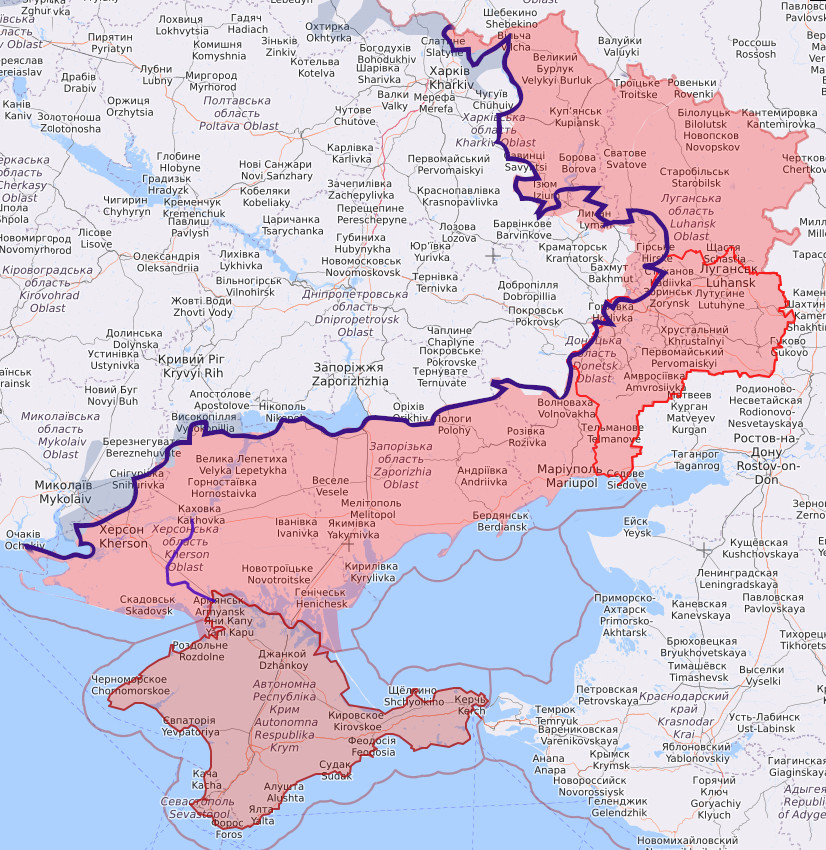
Situation as of 26th July. The blue line is the line of contact (LOC) as it was on 8th May. The red line shows the extent of Donetsk and Luhansk republics liberated before 2022. Shaded blue areas by Mykolaiv and Kharkiv are claimed by the mapmakers to be areas liberated by Ukraine, although the LOC clearly has remained largely unchanged these parts for two months. Indeed, these areas appear on liveuamaps.com maps on 15th and 13th May (respectively). Red areas on Ukrainian side of LOC are Russian gains since 8th May. Source is liveuamap.com
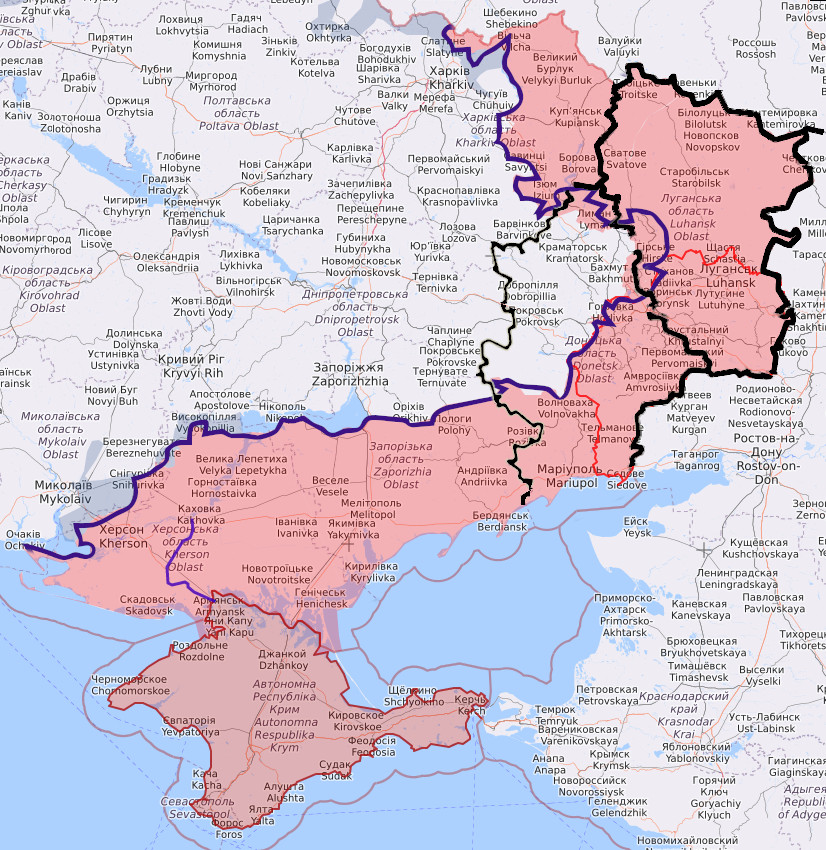
Same map as above, but with borders of Donetsk (to the west) and Luhansk (to the east) added, The map shows Luhansk fully liberated since 8th May, and steady but important progress towards Bakhmut and Kramatorsk in Donetsk.

As reported by liveuamap.com as at 22.00 (approx.) BST, 26th July, Russian activity in the cauldron between Izium and Horlivka.
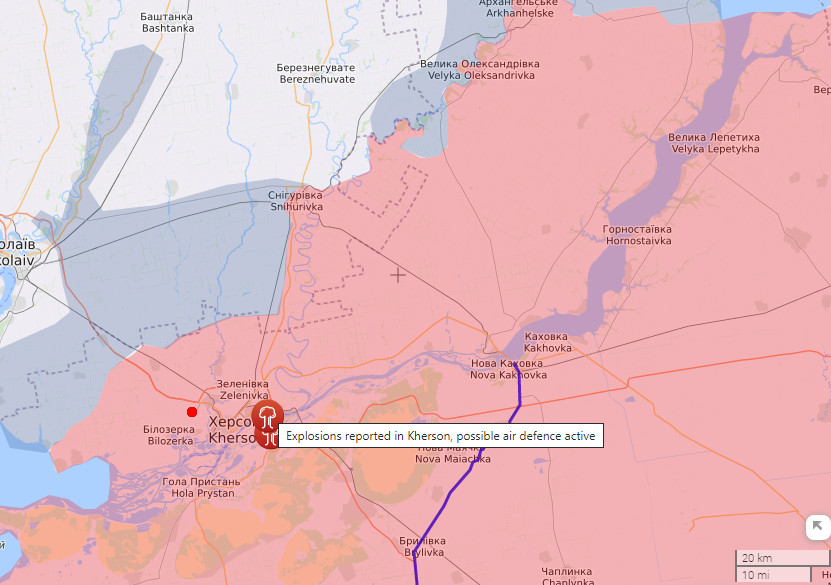
liveuamap.com reporting of Ukrainian “missile strike reportedly at Antonivsky bridge in Kherson”, approx. 21.00 BST, 26th July.
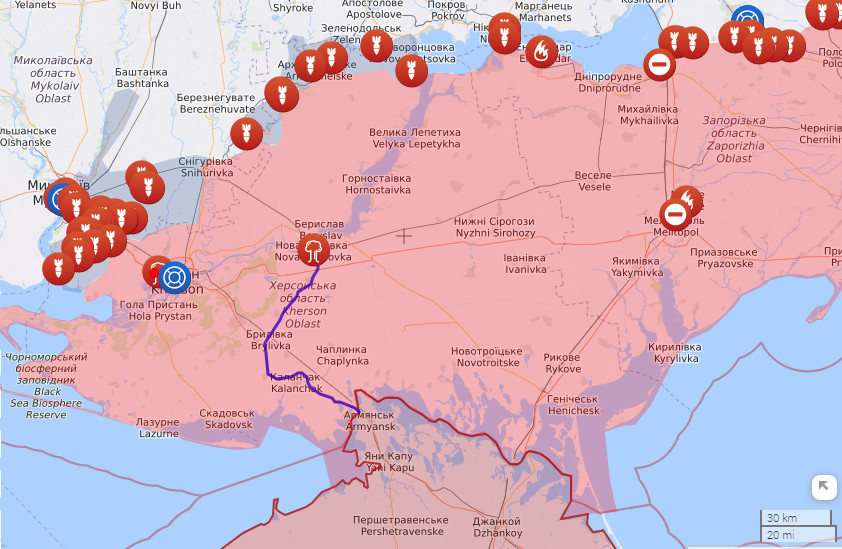
Similar Russian activity, same area, 12th July. Incidentally, for most of these indicators of Russian shelling, liveuamap .com cite the General Staff of Armed Forces of Ukraine as the source.
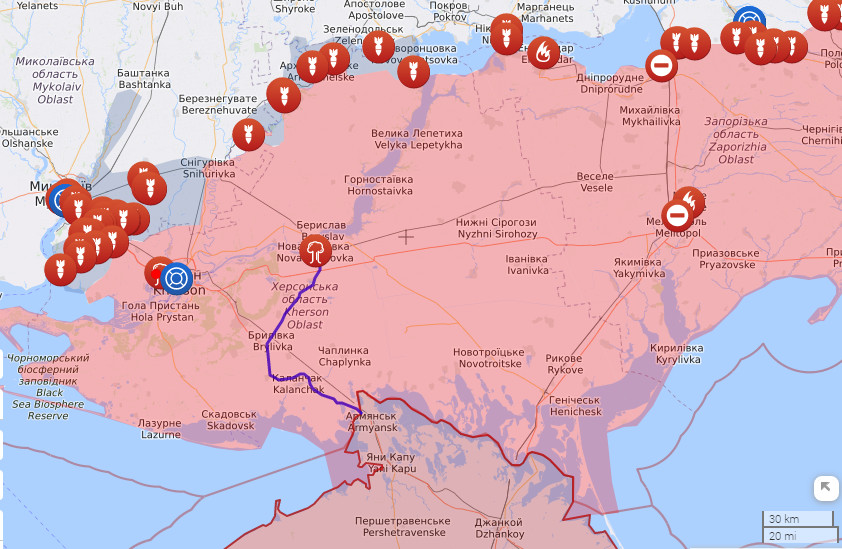
21st July. This was a second peak of activity after the 11th and 12th. The intervening period saw Russian shelling but not at such great intensity (according to the reporting by symbols). An entire period of escalation appears to begin to materialise on 9th July. Of course, this activity coincides with a much vaunted counter attack by the Ukrainians that never materialised.
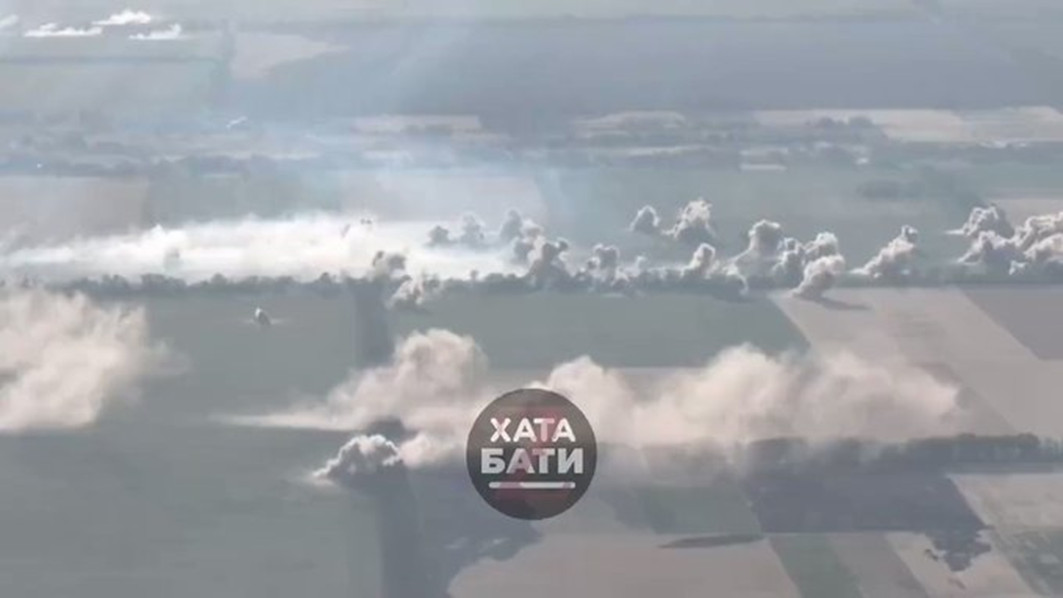
13th July, Twitter user @Taurevanime posts a film from which this still is taken, with this claim: “Kherson counter offensive got stopped by an absolutely massive artillery barrage.”
(Source)
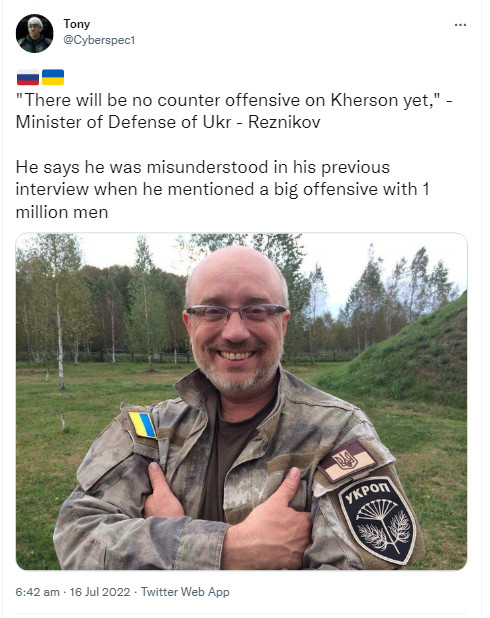
11th July, the Daily Mail: “Ukraine has claimed it is raising ‘a million strong’ fighting force to regain territory lost to Russia. “A counter-offensive using Nato-supplied weapons would take the fight to Moscow’s troops in the south and east of the country, said defence minister Oleksii Reznikov.” 16th July: Reznikov: “I did not talk about the gathering of a million-strong army in an interview with the British Times. I was misunderstood. Let them forgive me, but my English is not native.”
(Source)
(Source)
(Source)




